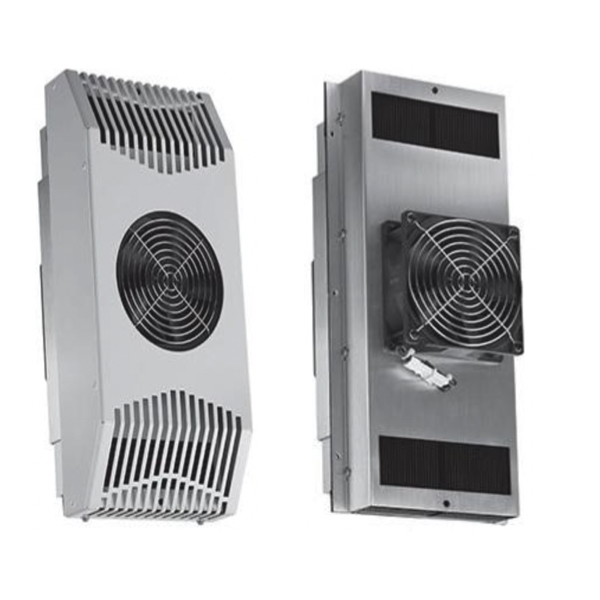Thermoelectric Enclosure Coolers

Thermoelectric enclosure coolers provide reliable, solid-state temperature control for electrical and electronic enclosures housing sensitive equipment. RSP Supply carries a full line of thermoelectric enclosure coolers designed to maintain stable internal temperatures without the complexity of traditional refrigeration systems. These coolers use thermoelectric technology to transfer heat efficiently, helping protect components from heat-related performance issues and premature failure.
Unlike conventional air conditioners, thermoelectric coolers operate using the Peltier effect, where an electric current moves heat from one side of the device to the other through semiconductor materials. This process cools the air inside the enclosure while dissipating heat to the external environment. Because thermoelectric coolers have no refrigerants and minimal moving parts, they offer long service life, quiet operation, and reduced maintenance requirements. Their compact design makes them well suited for applications where space is limited or where contamination-free cooling is required.
Heat sinks play a critical role in thermoelectric cooling systems by dispersing the heat generated during operation. These heat sinks are typically constructed from high-thermal-conductivity materials such as aluminum or copper and feature finned surfaces to maximize heat dissipation. In some designs, integrated fans improve airflow across the heat sink to enhance cooling efficiency. Together, these components create a dependable cooling solution for industrial, automation, and electronics enclosures operating in demanding environments.
More Information about Thermoelectric Enclosure Coolers
An essential part of a thermoelectric cooler is the heat sink. It aids in getting rid of the heat that the cooler makes when it is working. The thermoelectric elements create a temperature difference between the internal and ambient heat sinks, making internal air cooler while dissipating heat into the external environment. Heat sinks are usually made from materials that have high thermal conductivity (e.g., aluminum, copper). They have a large surface area (often with fins or ridges) to present as much of the outside surface as possible to the surrounding air. The airflow around the heat sink (natural or induced, such as by a fan) allows the heat to escape. If the heat sink didn't work, the thermoelectric cooling "chiller" would quickly overheat and stop working. Indeed, fans are used in some systems to boost the effectiveness and efficiency of the heat sink.
FAQs
Q: What is a thermoelectric enclosure cooler?
A thermoelectric enclosure cooler is a solid-state cooling device that uses the Peltier effect to transfer heat out of an enclosure without refrigerants or compressors.
Q: What are the benefits of thermoelectric cooling systems?
They offer quiet operation, compact size, low maintenance, and reliable cooling without moving mechanical components or refrigerants.
Q: What is the typical cooling capacity of thermoelectric enclosure coolers?
Cooling capacity typically ranges from approximately 10 to 500 watts, depending on the model and application.
Q: Are thermoelectric coolers suitable for contaminated or harsh environments?
Yes. Their sealed, solid-state design allows them to operate effectively in environments with dust, moisture, or airborne contaminants.
Q: Do thermoelectric coolers require ventilation or refrigerants?
No. Thermoelectric coolers do not use refrigerants and rely on heat sinks to dissipate heat externally.
Why Buy Thermoelectric Enclosure Coolers from RSP Supply
RSP Supply offers a comprehensive selection of thermoelectric enclosure coolers engineered for precision cooling and long-term reliability. Our solutions help protect sensitive equipment, reduce thermal stress, and simplify enclosure climate control in industrial and automation applications. Customers rely on RSP Supply for dependable enclosure cooling products, competitive pricing, and knowledgeable technical support.

